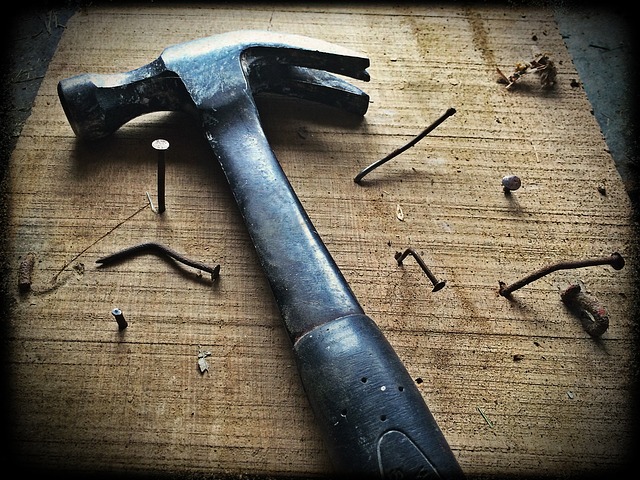
USDA grants can be used for many purposes, including home repair. These funds can be used for specific projects or loans. USDA grants can also be used to advertise in rural areas. These grants offer the same repayment options as mortgage loans. They can also help increase your home's market value. Here are some reasons you might be eligible for USDA grants to help with home repairs. It is simple to get an estimate.
Section 504 is a government-sponsored home improvement program
Section 504 home repair program, also known single-family housing repair loans and grants, offers funding for home improvements and modifications. These programs are designed to help homeowners with low or very limited incomes who have significant obstacles to home maintenance. They aim to make housing more accessible and safe for disabled people. The program offers grants and loans to homeowners for home modifications.

It's available to homeowners with very low incomes
Maintaining their home can prove to be expensive for many Americans. But thanks to USDA grants for home repair, low-income families can now take advantage of free money to make much-needed repairs. The USDA offers two main types home repair grants: Section 504, which provides assistance to rural residents with home repairs, or the USDA Housing Preservation Grant, which gives money to charities that are involved in home repair projects.
It is designed for people with disabilities
USDA rural development grants and loans are available to homeowners with low incomes, elderly and disabled. Applicant must be aged or disabled and have a restricted income. Some applicants may be eligible for loans and grants. If the applicant is able to repay the loan over a time period, a partial grant or loan might be available. The New York State Affordable Housing Corp. manages USDA Rural Development.
It is available all year
USDA grants for home repair are available year-round, but the best time to apply is when your house needs repairs. Rural homeowners face more difficulties when it comes home repair and maintenance. USDA grants for home repair help these homeowners with these challenges. They are also less likely to have access to financing elsewhere because of their poor credit rating. To qualify for a grant, you must be at least 62 years of age and must live in the home for at least two years.
It is available in rural areas
USDA Rural development provides funding for both home purchase and home repair. In rural communities, you can get a zero percent down payment, no interest rate loan. You must follow certain credit and income guidelines. You must be at most 62 years. The maximum lifetime grant amount is $7500 Visit the USDA Rural Development website for more details. In rural areas, you can also apply for a direct loan through your local county.

It is accessible to seniors on low income
If you are a senior citizen, and need assistance with home repair, you can contact your state Department of Aging. Many states have home repair grant programs for seniors based on income and age. The U.S. Department of Agriculture can grant a low-income housing repair grant. If you're eligible, you could receive as much as $10,000 in home repair assistance to seniors.
FAQ
Is it worth paying more for professional handyman service?
It all depends on what type of project you are looking to accomplish. A professional handyman service is recommended for complex projects such as office renovations.
What is the average time it takes to complete a DIY project?
The average DIY project takes anywhere from two to four hours. The complexity and difficulty levels of the project determine the length.
Do I need to pay a handyman per hour or per project?
Personal preference will dictate the final price. Some people prefer paying by the hour to know exactly how much their handyman charges. Some prefer to pay per completed job, as they might be working on multiple projects simultaneously. It doesn't matter which way you go, it works great.
What training do I need to give a handyman in order to do my job?
No. Handymen are already skilled and have the knowledge to tackle any job. You only need to provide the materials needed to complete the task.
Are there any requirements to be a handyman?
To become an independent contractor in most states, you don't need to have a license (as opposed with a salaried worker). However, there are some requirements you must fulfill:
-
Must be at least 18
-
A high school diploma or GED is required.
-
Complete a four-week course at a vocational school.
-
Pass a background check through the state's Department of Licensing.
-
Annual registration requires payment of $20
You will also need a workers' comp insurance and a business license.
What's the time taken by a handyman for a project to be completed?
It depends on the size of the project. Larger projects usually take more time to complete. The average handyman will finish any size project within one week.
Is there anything I should look out for before hiring a handyman?
Hire someone with experience in the type of project you are looking for. You should also check references and ask past customers. You might also consider including some extra money for unexpected expenses. You will also need to make sure that your driver is licensed and insured.
Statistics
- An estimate was that in 2003, the market for home maintenance and repair spending was up 14% 2001 to 2003. (en.wikipedia.org)
- With a strong housing market, the handyman and general maintenance worker industry are expected to grow by nearly 10% in the next decade. (housecallpro.com)
- According to the U.S. Bureau of Labor Statistics, in May 2020, there are 1,357,630 handymen employed in the U.S.. (angi.com)
- More than 20% of homes in America have outdoor living spaces, including decks and patios. (mrhandyman.com)
- Our handyman services for seniors are provided by professional senior helpers who have been serving the community for over 20 years with 98% customer satisfaction. (cantatahomeservices.org)
External Links
How To
How to Replace Broken Tiles
Step 1: Remove the old tiles.
Take out the tiles and place them on a new flooring surface. If you intend to use them, you will want to keep them intact. It's important to note which parts are missing or damaged in order to be able to find the right replacements.
Step 2 – Choose New Tiles
You can take a look at the different options for tile replacement.
-
Find a new tile that's similar to the one you removed.
-
You can use the measurements taken when you removed the tile to locate a matching piece. This makes it easier to get the right size without having to measure again.
-
Consider looking for colors, patterns, textures and sizes in a variety of shapes and colors.
-
Consider what grout you prefer to use. Some people prefer to use a single color, while others love mixing it up.
-
You should ensure that the tile you choose is resistant to moisture.
-
Make sure you consider where your tile will be placed. It can help you save money and time.
-
Once you've chosen your tile, order it online or call your local Lowe's store to place your order.
Step 3 Install the new tiles.
Use the same method as before to install your new tiles. Be careful to align them properly so they fit together perfectly.
Step 4 – Clean up
Be sure to sweep up all debris from the floor before applying the final protective layer.
This will prevent dust and dirt from building up between the tiles.
Step 5 - Sand the Floor
After everything has been cleaned, sand it down to remove any remaining particles from the previous steps.
Step 6 - Finish Off
Once the floor is completely smooth, apply the protective coatings to the tiles. You should wait until this stage as wet paint can stain new tiles.
To protect your floors from stains, you can use "damp-and dry" products.
It won't solve every problem after your tiles are installed. For example, if you have a lot of kids running around, you may want to consider using an anti-slip coating on top of the protective layer.
And finally, remember to leave the protective sealer on for several weeks before moving back into your home.